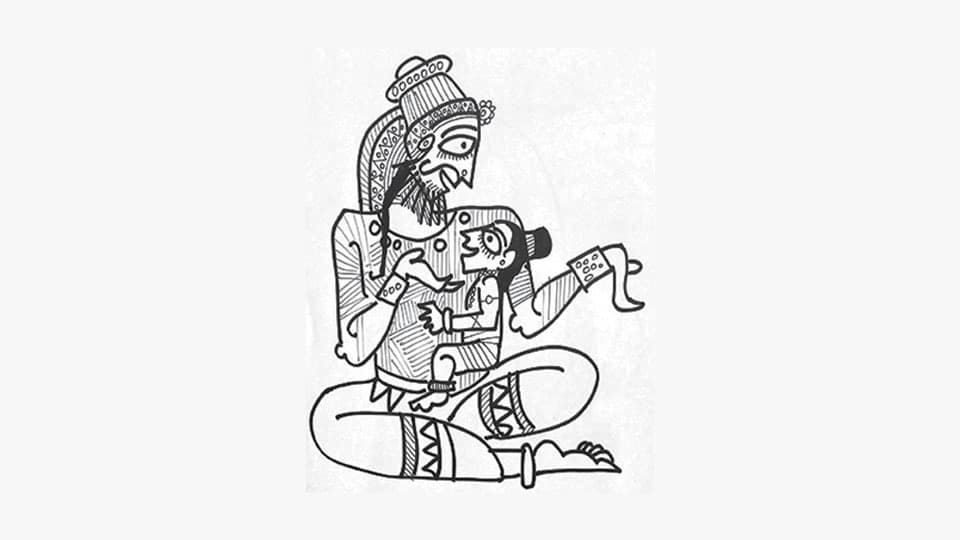By Dr. Devdutt Pattanaik – Author, Speaker, Illustrator, Mythologist
These days, business families are including their daughters in the family businesses. Yet on careful observation, one notices that the son is given responsibility for “outside” jobs such as production and sales, the jobs that take you to the factory and the market. The daughter is usually put in charge of “inside” jobs such as marketing, finance and human resources, jobs that keep you in the office, on the desk. There is gender discrimination within diversity and inclusion even inside families.
Be that as it may, what prompts an entrepreneur to pass on his enterprise to his children? Why does he not pass it to meritocratic professionals? Is this the ancient Hindu concept of Putra-moha, an obsession with one’s own children that leads to the downfall of the kingdom? This idea is explored in the Mahabharata. Here, the blind king Dhritarashtra is obsessed with his 100 sons, the Kauravas. This leads to the great war that destroys the Kuru clan. In the Ramayana, Dasaratha died heartbroken, because his son was exiled, following family politics. When we read the Ramayana and Mahabharata, we never ask the question why is the crown of the kingdom being passed on to sons and not to some worthy youth? Was this always the case?
The Puranas have constant references to kings being childless. Is this a metaphor for kings who are not satisfied with their children? Could this be why they adopt children who are worthier? We have a Hiranyakashipu torturing his son Prahalad because Prahalad disobeys him and worships Vishnu. Disobedient sons are often rejected by proud kings. Such kings would naturally consider themselves childless. In seeking more compliant children, they adopt perhaps worthier or maybe more obedient children. Then, there are also stories of kingdoms where the royal elephant is asked to go around the kingdom. He randomly picks up a youth from the streets to become the king. This suggests that kingship has nothing to do with meritocracy and that anybody can be a king.
Hindu scriptures refer a lot to the idea of inheritance. This helps us understand nepotism in the context of Indian culture and dharma. Dharma emerges as culture is established. Culture is essentially created to save human beings from the demands of nature. In nature, might is right, in nature no one comes to your help. Yet, in culture, the meek can be protected. You can help those who are weaker than you; but who deserves help? Of all the weak people in the world, we naturally help our family members, our children, our friends. Essentially, we help those who are extensions of our own selves.
So I expand to mine, while you expand to yours. It takes a lot of spiritual courage to create resources for strangers who we have no connections with. Perhaps this is the root of nepotism. We want to stay immortal. But we know we are not immortal. We transfer ourselves through what we bequeath. We pass on what we have to our children, male or female, worthy or not. Through them we live on. Through them we become immortal. Our soul rests in our property and lives on beyond us, through our children, our sons and our daughters. Our property, our family name, our family vocation becomes the medium to establish immortality. Hence, we will share these with no one else except those who we refer to as “mine”.
Generosity or daan is about taking care of those beyond the sphere of relationships, about those we are unrelated to. To feed those who we don’t know is not easy. Tribal communities take care of the tribe. To feed the stranger is a virtue that needs to be cultivated. That cultivation of looking beyond ourselves and our people, is dharma. It is a struggle which explains why companies find it tough to give even a portion of its profits to charity.








Recent Comments